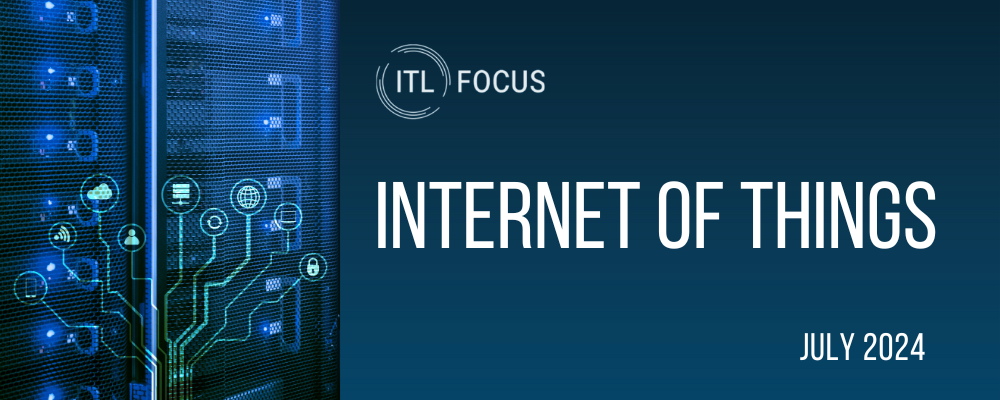Water perils not related to weather are a part of all insurance books of business. But our environment is experiencing what seems to be increasingly unpredictable and extreme weather events that can create havoc on those same books of business. From strong ice storms and blizzards to prolonged arctic blasts, these conditions disrupt daily life, damage infrastructure, and challenge business continuity. In this evolving landscape, organizations must consider adopting monitoring solutions to anticipate and mitigate weather-related risks.
Recent events have demonstrated that severe cold now affects regions across the entire country, from the Northeast to the Gulf Coast. Real-time monitoring is essential for managing these emerging risks effectively.
A consensus has emerged among insurance carriers leading the way in IoT adoption: Connected insurance represents a societal good. This shift is driven by several key benefits:
- A reduction in expected losses
- Improved alignment of rates with risks
- Increased efficiency in claims processing
These advantages may allow a significant number of policyholders to benefit from lower premiums while maintaining the technical balance of insurance portfolios. As a result, carriers can achieve sustainable profitability while expanding the availability and affordability of coverage.
HSB (part of Munich Re) and the IoT Insurance Observatory previously explored the industry's progress in integrating IoT-driven protection in their article, "Creating the Tipping Point for Insurance IoT: A Playbook for the Future." This article outlined the advantages of a connected insurance portfolio for carriers, policyholders, and society at large.
HSB has deployed hundreds of thousands of sensors across U.S. properties. This connected portfolio enables the identification of key trends affecting insured properties while demonstrating the effectiveness of proactive protection strategies.
The Role of Networked Sensor Technologies (IoT)
Most would agree that IoT sensor technologies are critical in mitigating the impact of extreme winter conditions. Their effectiveness is built on a sophisticated ecosystem of capabilities that work together to detect adverse conditions, alert relevant parties, and enable swift action to prevent potentially costly damages.
Key components of an effective IoT approach include:
- High-Quality Sensors: These frontline devices detect water leaks, temperature fluctuations, and flow deviations. To function reliably, sensors must be highly accurate, durable, and resistant to extreme conditions.
- Real-Time Monitoring and Alerts: Continuous data transmission enables instant notifications to relevant stakeholders via SMS, email, and mobile apps.
- Responsible personnel: Alerts are only half of the equation—there must be personnel who will act in response.
- Robust Connectivity: Reliable communication through Wi-Fi, cellular, or LoRaWAN networks ensures redundancy—even during power outages.
- Advanced Analytics: Predictive algorithms identify risk trends and potential failures well in advance. Over time, these insights inform maintenance and risk management strategies.
- User-Friendly Interfaces: Intuitive dashboards focus attention on the most critical, actionable information, complemented by training and support for end users.
Notable Weather Events: A Sensor-Driven Perspective
Several extreme weather events have underscored the value of IoT-based monitoring, with Winter Storm Elliott (December 2022) and Winter Storm Enzo (January 2025) serving as key case studies.
Winter Storm Elliott (December 2022)
Winter Storm Elliott was a historic extratropical cyclone that disrupted nearly every U.S. state, including typically warm regions such as Texas and Florida. In the Midwest and Northeast, wind chills dropped as low as –30°F.
HSB's sensor network detected freezing conditions in Western states first, then tracked the storm's eastward progression. In areas unaccustomed to extreme cold (e.g., Texas), sensor alerts surged by 500% above normal levels. These timely alerts helped prevent damages worth millions of dollars by enabling preventive actions.
Winter Storm Enzo (January 2025)
From Jan. 18–25, 2025, a Siberian Express polar vortex, followed by Winter Storm Enzo, brought record-breaking cold across the U.S., affecting over 70 million people and leaving more than 75% of the country in freezing conditions.
In southern Texas and Louisiana, temperatures plummeted into single digits, with Baton Rouge's airport recording 7°F—the lowest temperature in 95 years. New Orleans experienced up to 10 inches of snow, matching a record set in 1895. For the first time, blizzard warnings were issued for coastal Louisiana and Texas.
During this period, HSB's sensor network issued approximately 9,000 alerts, with 90% related to freeze conditions. The peak of the storm (Jan. 21–22) saw 3,760 alerts in just 48 hours. Jan. 21 alone recorded 2,000 alerts—10 times the normal daily average.
The most significant impacts were observed in Mississippi, Alabama, and South Carolina, where alert volumes soared up to 40 times their normal daily levels. Thanks to these real-time alerts, policyholders were able to take preventive action, helping to avert potentially millions of dollars in water damage losses from frozen pipes. This event demonstrated a strong return on investment, with many programs exceeding a 200% ROI. This ROI is calculated by comparing the savings from this specific event to the total annual investment of IoT.
The Insurance Angle
The insurance industry must continue scaling these measures to maximize the prevention benefits demonstrated by HSB's experience. As IoT-driven solutions mature, they provide primary carriers and policyholders with critical tools to strengthen safety programs across commercial and residential property portfolios.
According to research by the IoT Insurance Observatory, carriers are pursuing several go-to-market strategies to integrate connected protection solutions:
- Complimentary Protection Solutions: Some carriers offer IoT protection services at no cost to existing policyholders. While the insurance contract remains unchanged, the insurer absorbs the service cost, expecting the reduction in claims to outweigh the investment.
- Certified Protection Solutions: Policyholders purchase and install certified protection systems, and in return, carriers provide annual premium credits. Over multiple coverage periods, the cost savings generate a positive return on investment for policyholders.
- Mandated Protection Solutions: Certain insurance products now require specific IoT technologies to qualify for coverage or receive favorable terms. This approach integrates technology directly into the insurance offering, fundamentally reshaping the industry's value proposition.
Even brokers and agents are recognizing the advantages of connected insurance. In the commercial property sector, some intermediaries now advise clients to:
- Invest in Protection Solutions: Businesses are encouraged to install mitigation technologies tailored to their specific risks.
- Adjust Deductibles for Mitigated Risks: Policyholders can opt for higher deductibles on covered perils, offsetting the cost of IoT protection with reduced annual premiums.
This strategy ensures that the investment in prevention technology is recouped through premium reductions while minimizing claims—creating a win-win scenario for insurers and policyholders alike.
Conclusion
As climate patterns continue to shift unpredictably, the insurance industry must embrace solutions to safeguard policyholders and mitigate losses. The increasing severity of winter storms, as evidenced by Winter Storm Elliott and Winter Storm Enzo, underscores the critical role of IoT sensor technology in protecting properties, reducing financial impact, and enhancing resilience.
HSB's deployment of sensor networks has demonstrated the tangible benefits of real-time monitoring, allowing carriers to see success in both weather- and non-weather-related damages. The average return for $1 invested in an IoT program is $8. These successes highlight the need for broader industry adoption, where insurers, brokers, and policyholders can collaboratively scale preventive measures to create a more resilient insurance ecosystem.
The future of property insurance lies in connected protection. By leveraging IoT-driven insights, insurers can enhance underwriting precision, reduce claim frequency, and offer more sustainable coverage options. Whether through complimentary protection, certified solutions, or mandated requirements, the integration of IoT technology is reshaping the industry's approach to risk management.
To fully realize these benefits, carriers must accelerate adoption, refine implementation strategies, and drive market education. With sensor-based monitoring, the industry can shift from a reactive claims model to a preventive protection paradigm—one that benefits insurers, businesses, and society as a whole.
This article was originally published at Carrier Management.









